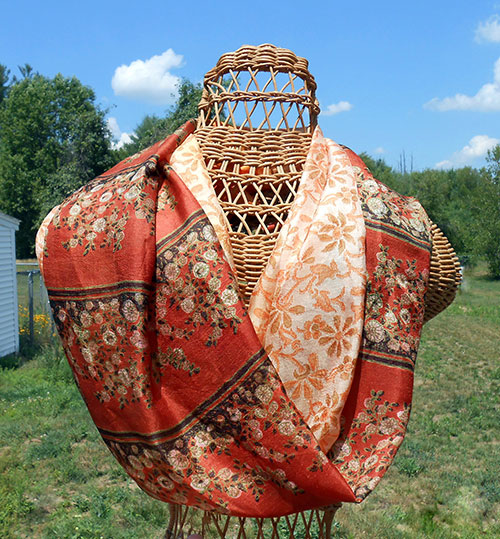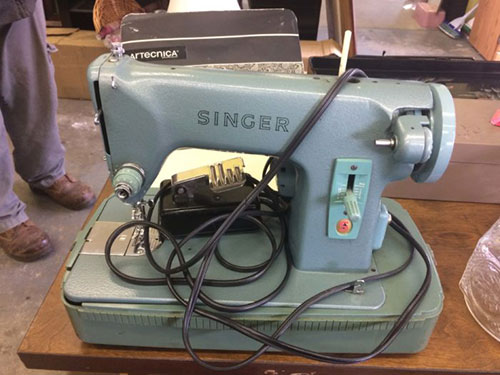Vintage Sewing Machines I Didn't Buy and Why
Once you start looking for them, you'll see vintage sewing machines everywhere: thrift stores, antique shops, flea markets, Craigslist, yard sales, etc. I have a lot of sewing machines, but I don't buy every single one I come across. I'd have to buy a separate house for my sewing machines!
In this post, I'll go over the sewing machines I didn't buy and why (see the sister post to this one: Tips for Buying a Vintage Sewing Machine). One you start collecting sewing machines, you'll start to ask yourself, should I buy this sewing machine?
I tend to buy Singer sewing machines because it's easier to find manuals, information, and parts online. Singer always manufactured under its own name, but many sewing machine manufacturers made machines for different brands.
A handful of manufacturers made machines under hundreds of different brand names, so it can be more difficult to find information on these. A lot of machines I passed up were lesser known brands.
Still, it can be fun to see the different brands, styles, colors, and features in vintage sewing machines. I love seeing different kinds of sewing machines--I have a whole board of them on Pinterest.
Disclosure: This post contains affiliate links, which means I may receive a percentage if you make a purchase using these links. This won’t cost anything extra to you. I only link to things I like and use, and the proceeds help me to run this blog. Thank you for supporting me!
Vintage Sewing Machines I Didn't Buy
Blue Sewhandy Sewing Machine
This one was tempting.It's really cute--I love the color and decals, but the price of $195 was too steep for me. It's a precursor/contemporary to the Singer Featherweight, according to this Featherweight Shop Blog post and this article from Collector's Weekly. You can see the the case behind it is very similar to the Singer Featherweight case, and it's a light, portable sewing machine. It was so compact, I thought it might be a child's sewing machine! I kind of regret not buying this one, but it was too pricey for me at the time.
Industrial Singer Sewing Machine
This industrial Singer appears to be facing the wrong way. I'm not sure what model it is. I also didn't see a price on it, and I was at a flea market. I have an industrial sewing machine (see my post on the Singer 281-1), and I know how heavy they are. I can't even lift the head on my 281-1, and I can barely tilt it back in the table! This one wasn't tempting enough to lug across a giant field.
Singer 285 Sewing Machine
With the Singer 285, they poorly re-engineered the Singer 185, but used the same cute green body. One reviewer called it "the worst sewing machine Singer ever produced" and another reviewer said it's "not really heavy enough for a boat anchor and not pretty enough for a door stop." It's easy to get fooled because the Singer185 and 285 look very similar, so be sure to double check the number before you buy it.
Wheeler & Wilson D-9 Sewing Machine
According to the The Encyclopedia of Early American & Antique Sewing Machines: Identification & Values, these are considered excellent sewing machines, but you'll have a tough time finding the right bobbins and needles if you buy an old Wheeler & Wilson. Even though I'd love to have a treadle machine, I passed this one up.
This one is just a plain straight stitch machine, though it looks like a sturdy one. I like its outer case, but I find the crinkle finish really ugly. I read somewhere that these machines received this particular finish during WWII because sewing machine manufacturers didn't have the necessary supplies to do a smooth, japanned finish, but according to Singer Sewing Info, this is a myth, and it was just a design choice for cosmetic reasons, and though I don't understand why this would be a desirable look, some people love the crinkle finish!
Morse Sewing Machine
I loved the look of this one, but it had an as-is sign on it and seemed to be frozen up. Morse, like many other sewing machines from the 50s and 60s, was made in Japan. I recommend the Vintage Japan Sewing Machines Yahoo Group if you want to learn more about these sewing machines. I wasn't familiar enough with Morse to know how to fix it.
Dressmaster Sewing Machine
Similarly, this Dressmaster was also made in Japan. I liked its weird shape--it was really tall yet compact. I wasn't intrigued enough to pay the $75 price tag, though. You can find a lot of sewing machines in the $10-30 range, and that's what I tend to stick with, unless it's a really exciting/rare machine.
Singer 301A Sewing Machine
The Singer 301 is a great machine, but this one had more issues than I wanted to deal with, including corroded spots on the metal, particularly the flip up bed on the front. Luckily, I recently found a 301 in good condition, and I'll post about it as soon as I've had a chance to test it out. There's even a whole website devoted to the wonders of the Singer 301.
Singer Fashion Mate 258
I have a modern Singer Fashion Mate, which I love, and I also really like machines that take cams (plastic discs that allow the machine to create patterned stitches). This one took flat cams, like the Singer 306 and 328--you can see the open compartment at the top where the cams go. However, this review paints it as a pretty crappy machine, so I passed on it. Even though it seems like a sturdy machine, it has plastic gears and isn't as well made as some of the earlier singers.
Bel Air Sewing Machine
I liked the name of this one (Bel Air), but it wasn't very remarkable otherwise. It looked like it might be a Singer 99 clone. Many Singer models were copied by other manufacturers.
White Sewing Machine
I loved the color on this machine, but it was a pretty basic straight stitch machine, and I have a lot of those already.
Federation Sewing Machine
This one really tempted me, but it's missing its shuttle, bobbin, and slide plates. It seemed like it would be fairly difficult to replace these, since the machine is not a common one. In its favor, it had a nice wooden case, beautiful decals, and an original hand crank. All of the hand cranks I own are reproductions. See my post on adding a reproduction hand crank to a vintage sewing machine. I thought about buying it just to cannibalize the hand crank, but ultimately didn't.
Premier Sewing Machine
This one was a deep green, which I hadn't seen before. It looks to be a Singer 15 clone. Again, it's just a straight stitch machine, and while I'm sure it's a nice one, I already have a Singer 15 (see my post on it) and didn't need another. It had a really pretty faceplate, though!























